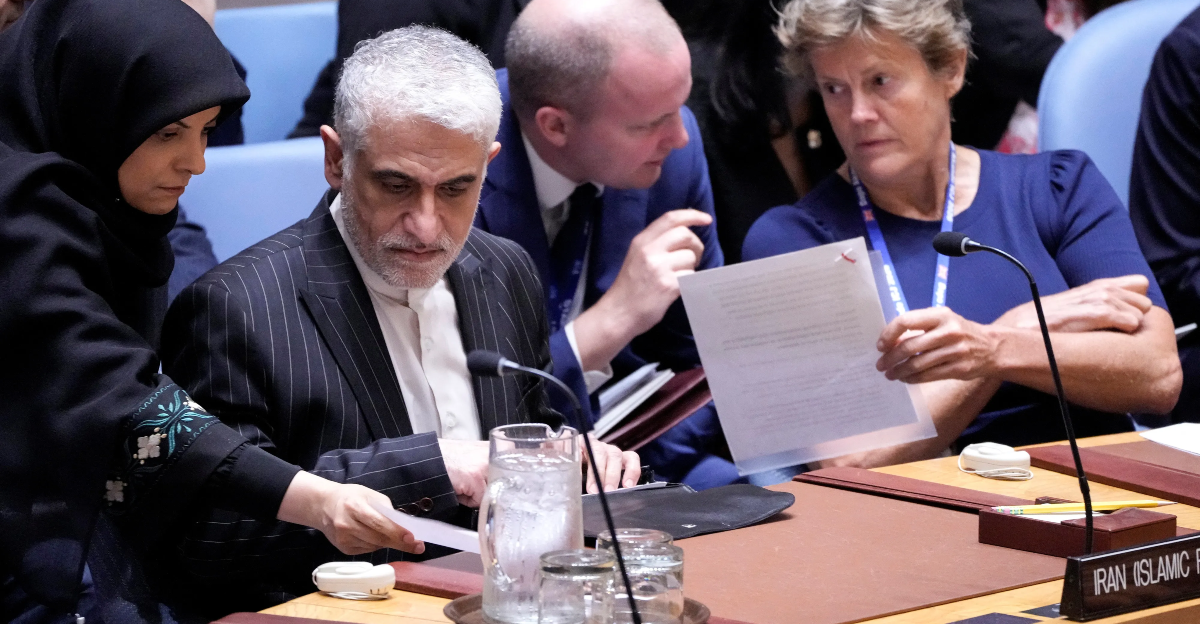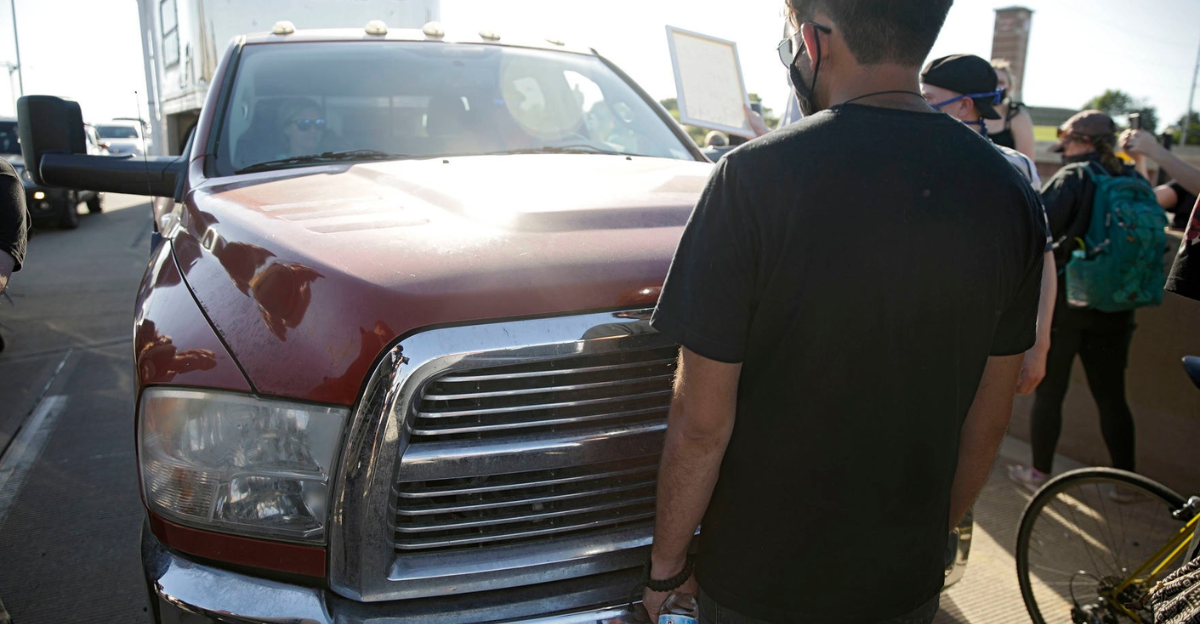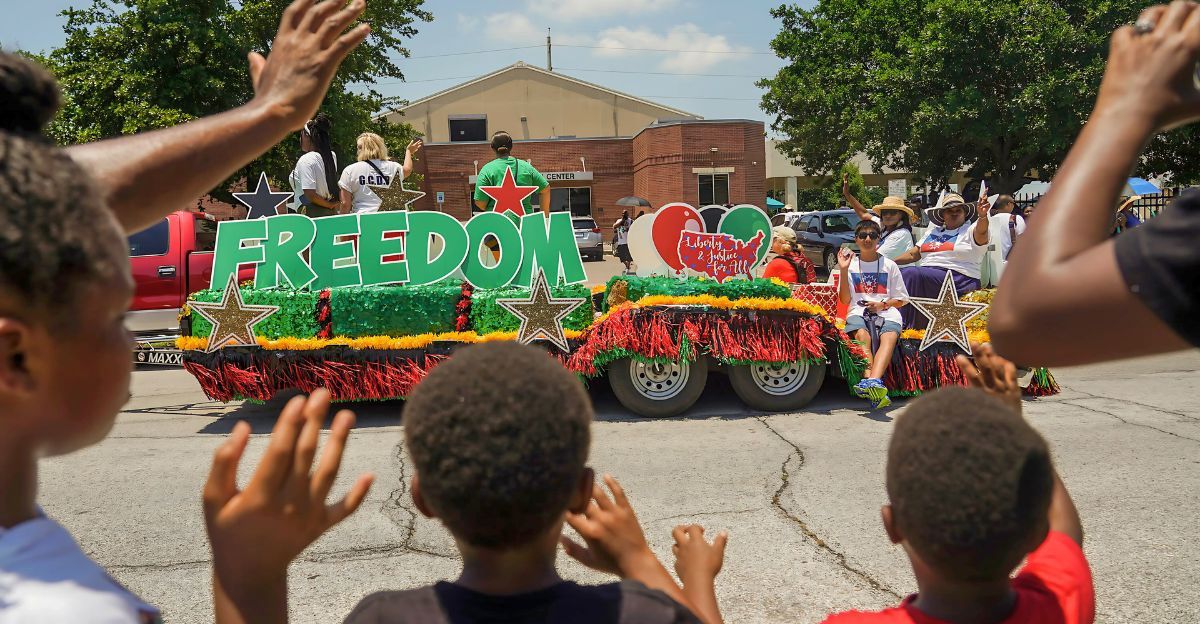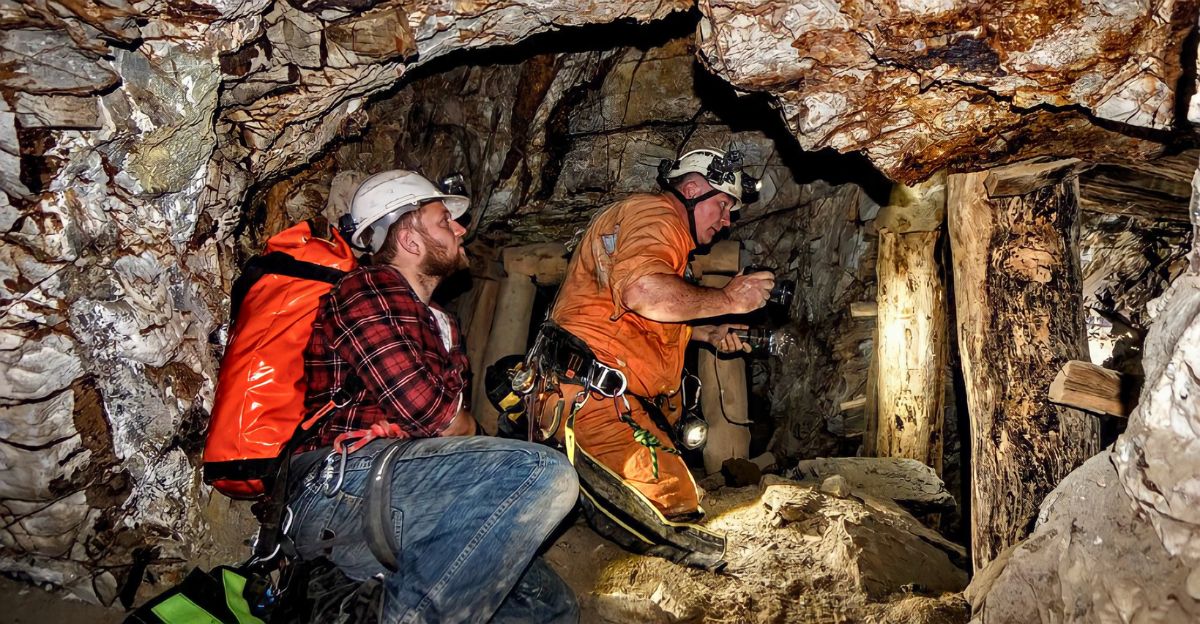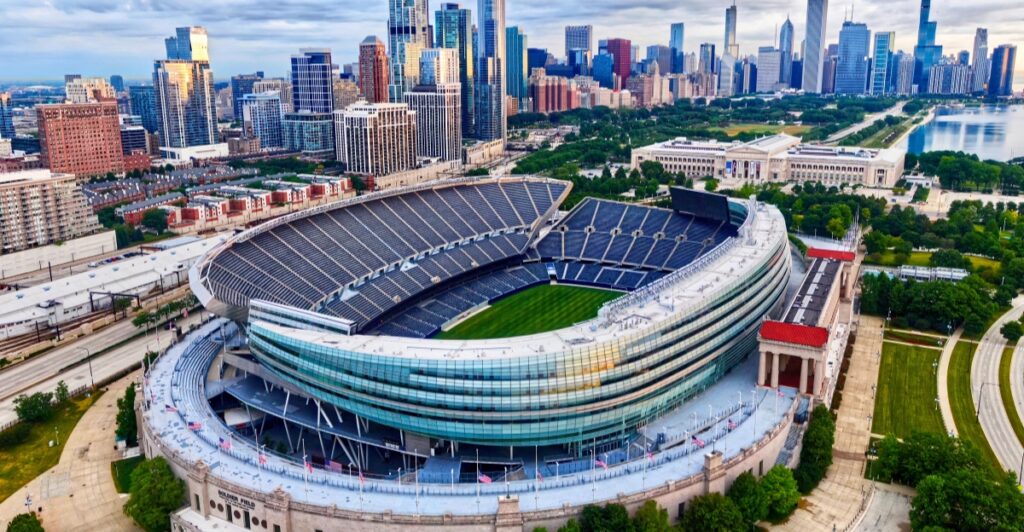
The Chicago Bears are embarking on a landmark transformative journey with a historic $4.7 billion plan to replace Soldier Field, the oldest stadium in the NFL, with a new state-of-the-art domed arena. The ambitious project aims to revitalize the team’s home while providing significant public benefits and modern amenities.
The new stadium will be located just south of the current site, promising enhanced facilities, expanded capacity and improved infrastructure.
This development marks a pivotal chapter in the Bears’ history as they seek to end a long-standing “Bears curse” and strengthen their ties to Chicago.
Soldier Field: A Historic Yet Aging Icon
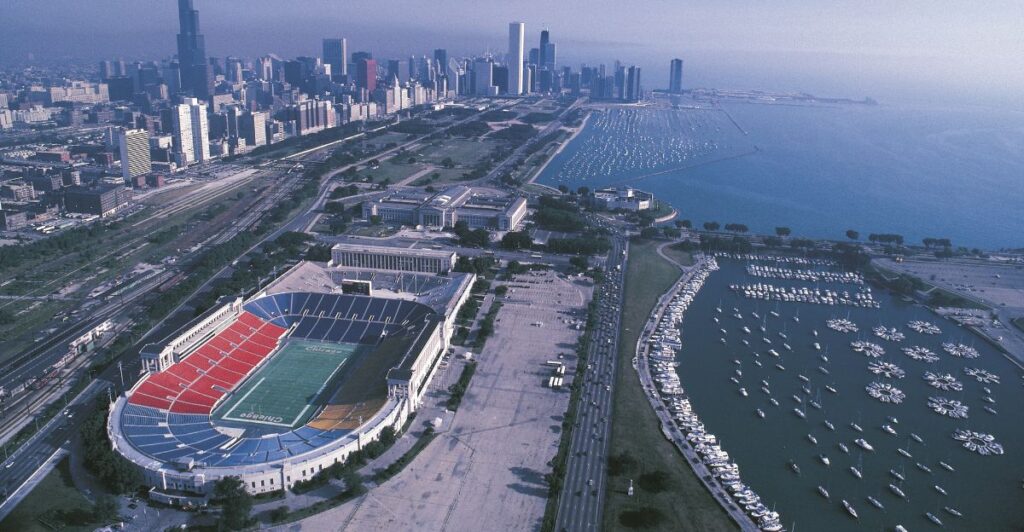
Soldier Field, built in 1923, is the oldest NFL stadium still in use and has been the home of the Chicago Bears since 1971. The stadium’s original capacity was 74,280, but it now only seats 62,500, making it the smallest stadium in the league.
The stadium is famouss for its distinctive Doric columns and has hosted historic events with appearances by people such as Amelia Earhart and Martin Luther King Jr. Despite its rich history, Soldier Field has been criticized for its aging facilities, poor turf quality and security issues, including a $100,000 equipment theft in 2023.
New Burnham Park Project Unveiled
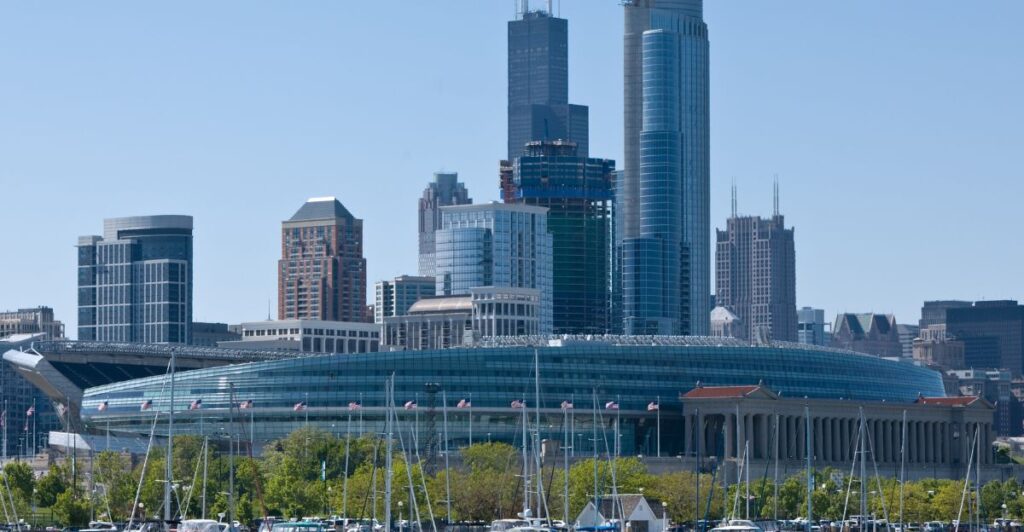
In April 2024, the Bears announced the Burnham Park Project, a multi-billion-dollar plan to construct a new stadium complex south of Soldier Field. The development would feature a 65,000-seat fixed-roof stadium with the potential to expand to 77,000 seats.
Alongside the stadium, the project includes a three-acre promenade, retail and hospitality outlets, and 14 acres of athletic fields intended for public and youth sports programs. The new venue is expected to be a year-round sports and entertainment destination.
Environmental Sustainability Initiatives

The Bears’ new stadium is an effort to be a leader in green design, featuring solar panels, rainwater harvesting, and energy-efficient systems.
The facility will pursue LEED certification, using recycled materials and native landscaping to reduce its environmental impact.
These efforts align with Chicago’s climate goals, promising a stadium that will not only host world-class events but will also sets a benchmark for sustainable urban development.
Cutting-Edge Fan Technology
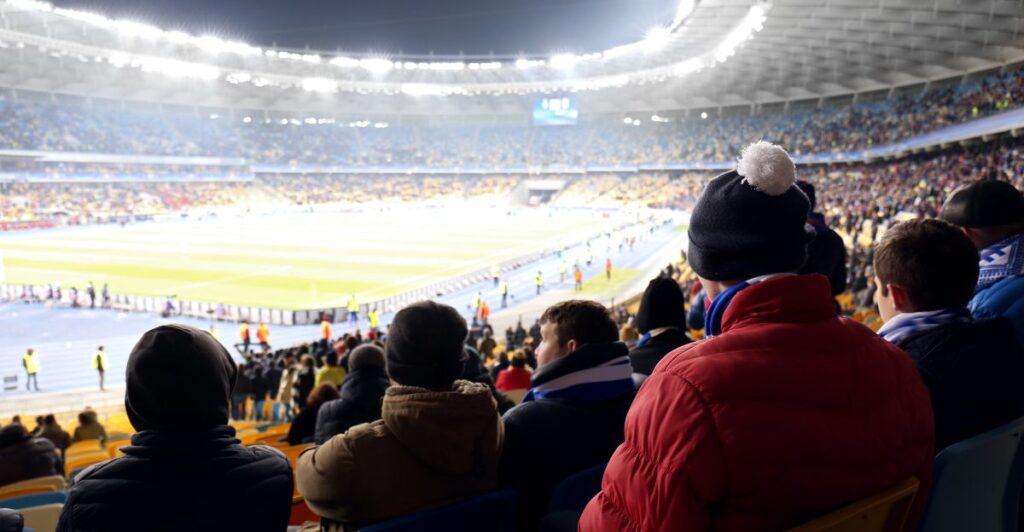
Fans can expect a high-tech experience, with the stadium incoporating adavanced WiFi, real-time data streaming, and interactive mobile apps.
Features like augmented reality replays, seat-side ordering and personalized experiences will increase engagement.
Smart sensors throughout the venue will monitor crowd flow and comfort, promising a seamless and immersive game-day experience that keeps the Bears at the forefront sports technology.
Innovative Concessions and Hospitality

Concession stands will feature “Just Walk Out” technology, allowing fans to grab snacks and drinks without having to wait in line. Premium suites will offer customizable menus, local chef collaborations and exclusive viewing lounges.
The stadium’s hospitality offering aim to showcase Chicago’s diverse food scene, making every visit a culinary adventure and elkevating the overall fan experience beyoond the game.
Celebrating the Bears History and Legacy

The stadium complex will also include a dedicated Bears Hall of Fame and interactive museum. Fans can celebrate iconic moments in virtual reality exhibits and memorabilia displays where fans can relive iconic moments, meet legendary players in hologram form, and explore the team’s stories past.
This focus on heritage ensues that the franschise’s rich history remains front and center as it steps into a new era.
Enhanced Tailgating and Social Spaces

Tailgating will be reimagined with dedicated zones featuring weather protection, built-in grills and communal seating.
The stadium campus plans will include beer gardens, pop-up entertainment and family friendly activities, transforming game days into all-day events.
These enhancements aims to strengthen the community spirit and make the stadium a year-round destination for fans and locals alike.
Transportation and Accessibility Upgrades

To address long-standing access issues, plans include a new nearby transit hub, improved bus routes and expanded bike lanes. Shuttle service and additional ADA seating will be provided at stadiums to allow fans to attend comfortably.
These upgrades are intended to reduce congestion, encourage use of public transportation and make the stadium accessible to everyone in the Chicago area.
Community Engagement and Public Benefits
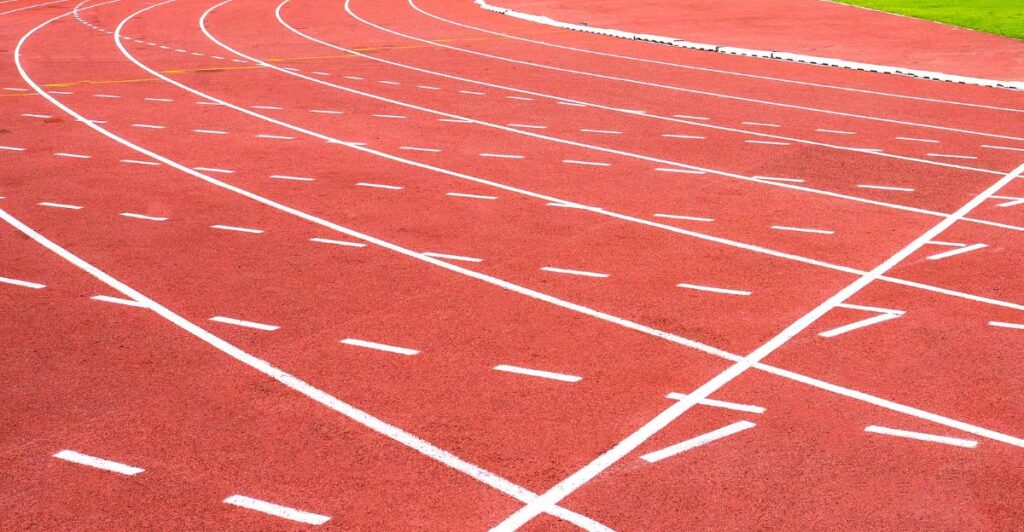
Beyond sports, the stadium campus will include public parks, playgrounds and athletic fields available for use 365 days a year. The Bears are also partnering with local schools and nonprofit organizations to offer youth sports programs and job training initiatives.
These community investments are intended to ensure the project delivers lasting benefits to chicago residents, not just on game days but every day.
Contingency Planning and Arlington Heights Option
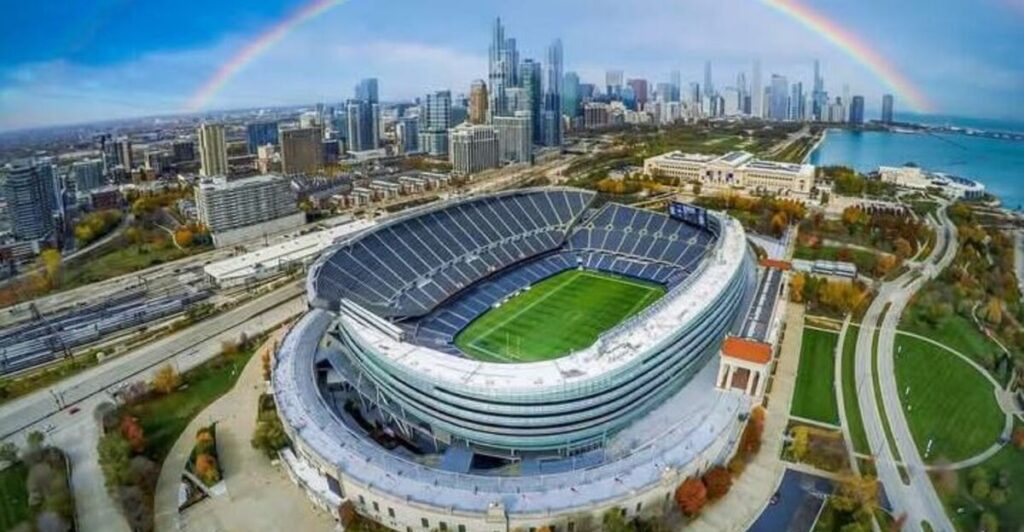
While the Bears are focused on the lakefront, their ownership of the Arlington Heights site remains a fallback. If regulatory or financial hurdles prove insurmountable downtown, the team could revive plans for a suburban complex.
This dual-track approach gives the Bears leverage in negotiations and ensures they have alternatives if the currents proposal stalls.
Architectural Vision and Design
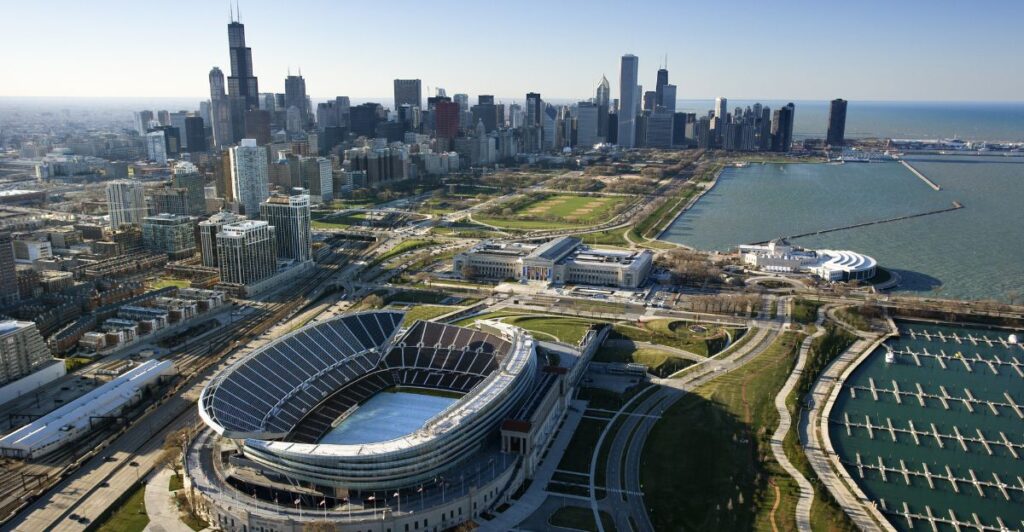
Designed by Manica Architecture, the proposed stadium will feature a comtemporary dome shape with a fixed roof, providing stunning views of Chicago’s skyline and Lake Michigan. The layout features intimate seating for optimal sightlines and open spaces for socializing.
There are also plans to preserve Soldier Field’s historic colonnades, maintaining a connection to the past while embracing modernity. This blend of old and new aims to create a unique and iconic sports venue.
Economic and Community Impact

The new stadium is expected to generate significant economic benefits for Chicago, hosting large-scale sporting events such as Super Bowls, NCAA tournaments, and major concerts. The development includes public spaces like parks and plazas that will be accessible year-round, enhancing community engagement.
Chicago Mayor Brandon Johnson highlighted the project’s public benefits, emphasizing its potential to improve quality of life and create thousansd of jobs.
Infrastructure and Traffic Improvements
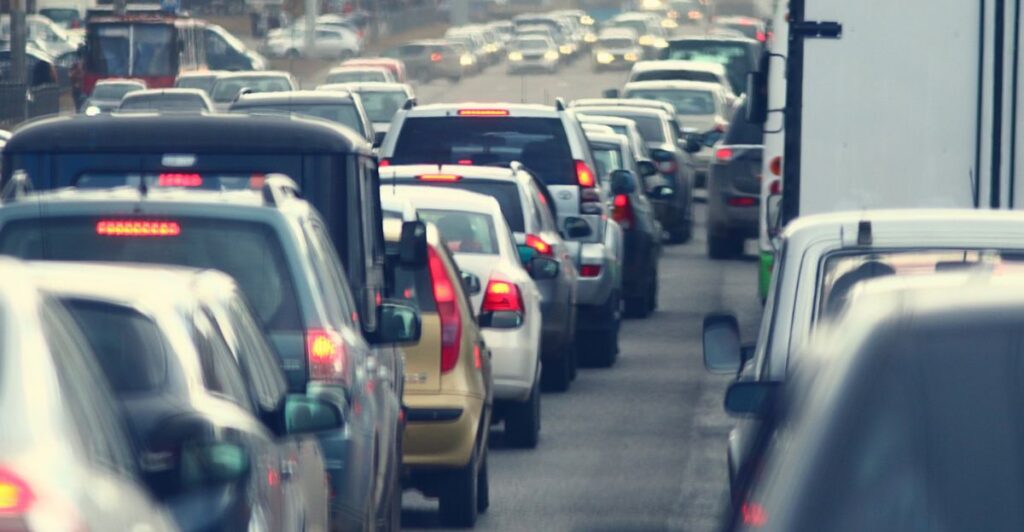
To support the new stadium, the plan proposes significant infrastructure enhancements, including enhanced ramps and interchanges at 18th Street, a new parking deck, better access to DuSable Lake Shore Drive, and new lower-level facilities for McFetridge Drive.
These improvements should expand campus capacities by 50%, reduce event exit times by 10-20 minutes, and also alleviate daily traffic congestion significantly, improving the overall vistor experience.
Funding and Financial Structure

The Bears have pledged over $2 billion, which represents more than 70% of the stadium’s construction cost. The remaining funds are expected from the Illinois Sports Facilities Authority, supported by a 2% hotel tax and refinancing existing stadium debts.
The estimated cost of building the stadium is $3.2 billion, with an additional $1.5 billion allocated for infrastructure improvements. This public-private partnership is central to the project’s economic feasibility.
Timeline and Project Challenges
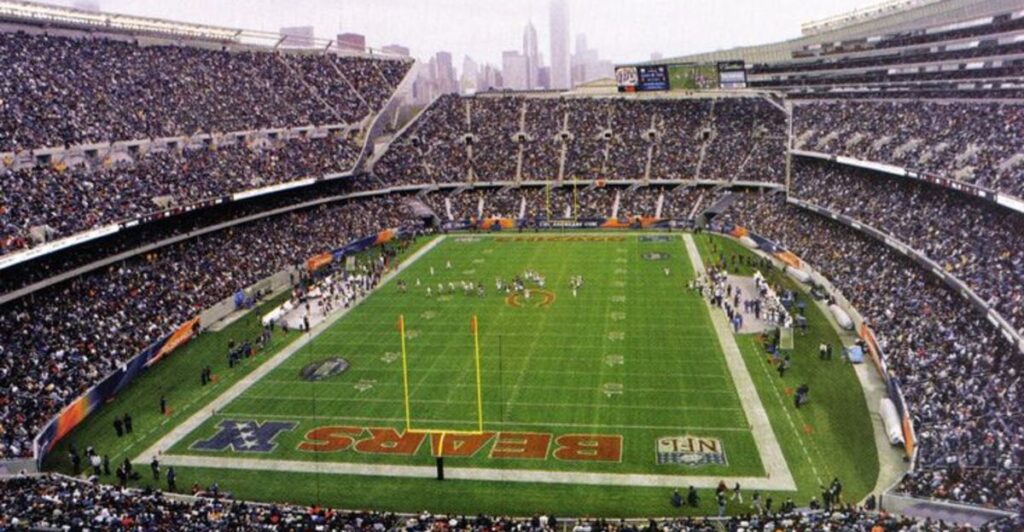
The Bears hope to begin construction in the summer of 2025, with the stadium expected to open in the summer of 2028.
The project, though promising huge benefits, is fraught with challenges, including obtaining approvals, managing costs and addressing public skepticism over the use of taxpayer money.
The Bears’ leadership remains optimistic, emphasizing their commitment to Chicago and the project’s long-term value.
Political and Legal Hurdles
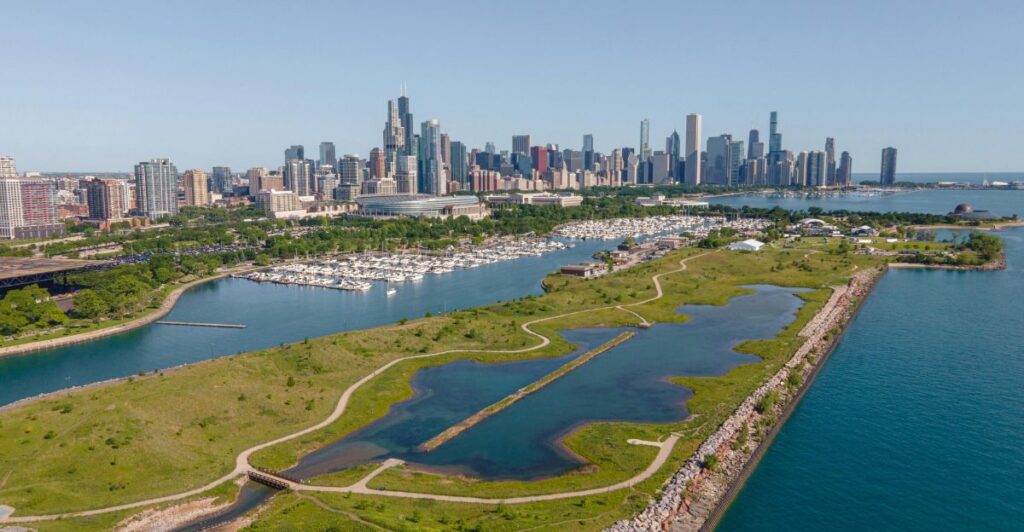
Despite broad ambition, the project faces significant political scrutiny and legal challenges, particularly over public financing and lakefront development.
Advocacy groups like the Friends of the Parks are raising concerns about the environmental impact and public access.
The Bears must navigate city ordinances, secure state approvals and community opposition to bring their vision to life, making stakeholder engagement a critical part of the process.
Legacy and Future Prospects
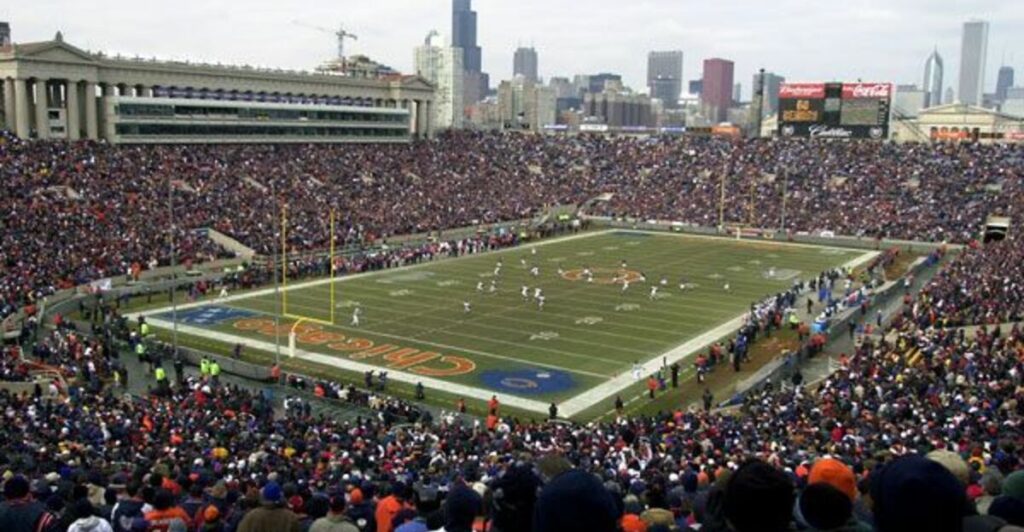
The Bears’ chairman, George H. McCaskey, said he was proud of the team’s deep roots in Chicago and sees the new stadium as a continuation of the franchise’s legacy.
The project is designed not only to enhance the team’s competitiveness but also to serve as a cultural and community hub, reflecting the spirit of Chicago and its residents. This stadium could mark a new era for the Bears’ and the city alike.
Offseason Developments and Team Outlook
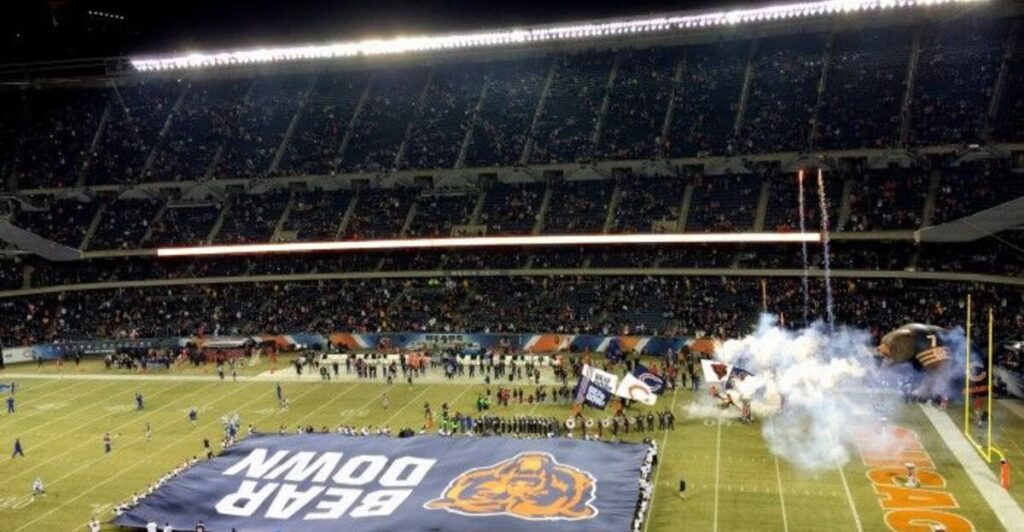
Amid the stadium plans, Chicago Bears quarterback Caleb Williams has impressed coaches with his offseason dedication, signaling hope for the team’s future on the field.
The combination of a new home and emerging talent could help the Bears break their Super Bowl curse, which dates back to 1985. The new stadium project symbolizes a fresh start for both the franchise and its fans.
Impact on Chicago’s Civic Identity
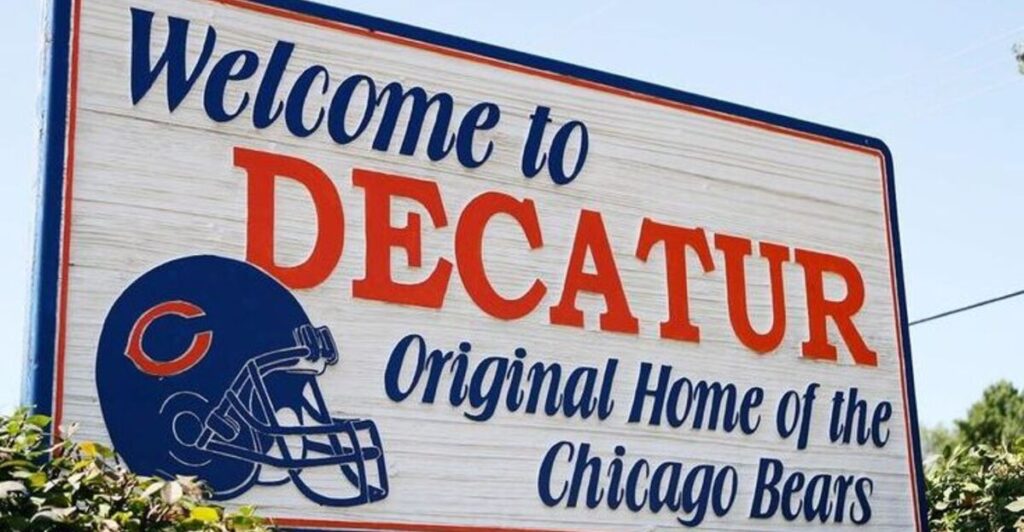
The stadium project is more than a sports upgrade — it’s a statement about Chicago’s future. Through a mix of innovation, community investment and respect for tradition, the Bears aim to build a civic landmark that unites the city.
Whether it’s hosting global events or local gatherings, the new stadium is poised to become a symbol of Chicago’s ambition and resilience for generations to come.
Uncover more fascinating moments from history — and hit Follow to keep the stories flowing to your feed!

Don’t miss more incredible stories from the past! Tap Follow at the top of this article to stay updated with the latest historical discoveries. Share your thoughts in the comments — we’d love to hear your perspective!

